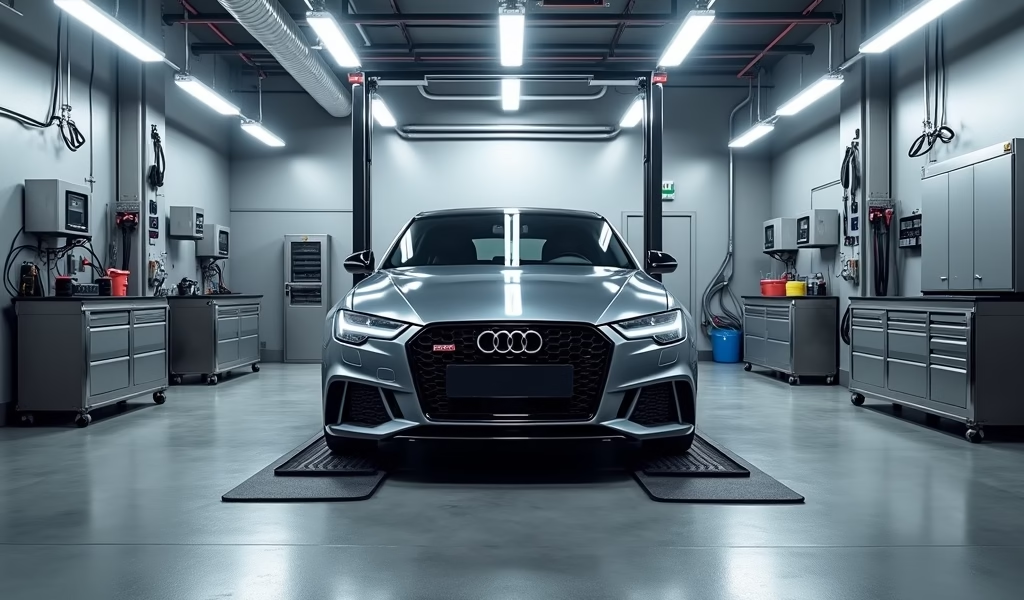Overview
This article explains how proper car maintenance in five key areas—brake systems, tires, fluids, lighting, and documentation—provides protection against both mechanical failures and legal liability in accident cases. The author, a mechanic with 20 years of experience, emphasizes that neglecting vehicle maintenance can lead to serious legal consequences including lawsuits, insurance complications, and even criminal charges if negligence can be proven.
Table of Contents
- The Legal Consequences of Poor Car Maintenance
- 1. Keep Your Brake System in Top Condition
- 2. Never Neglect Tire Maintenance
- 3. Regular Fluid Checks Can Prevent Catastrophic Failures
- 4. Maintain All Lighting and Visibility Systems
- 5. Document Everything: Your Legal Safety Net
- Conclusion: Protecting Yourself On and Off the Road
- Frequently Asked Questions
The Legal Consequences of Poor Car Maintenance
I’ve been a mechanic for over 20 years, and if there’s one thing I’ve learned, it’s that neglecting your car doesn’t just hurt your vehicle – it can land you in serious legal trouble. When attorneys handle accident cases, one of the first things they investigate is whether proper maintenance could have prevented the crash.
Did you know that according to the National Highway Traffic Safety Administration, vehicle maintenance issues contribute to approximately 12% of all crashes? That’s a sobering statistic that keeps me up at night. I’ve seen firsthand how a simple maintenance oversight can cascade into a life-altering event with serious legal ramifications.
When an accident occurs due to a maintenance issue, you might face more than just repair costs. You could be looking at personal injury lawsuits, insurance complications, and even criminal charges in severe cases. I’ve had customers come in for routine maintenance after dealing with auto accidents lawyers who emphasized how preventative care could have saved them thousands in legal fees.
The courts don’t look kindly on drivers who neglect their vehicles. If it can be proven that you knew about a maintenance issue but chose to ignore it, you could be found negligent. This is why I’m passionate about teaching my customers these five critical maintenance areas that attorneys frequently see in accident cases.

1. Keep Your Brake System in Top Condition
Your brakes are quite literally your life-savers, and they’re the first system attorneys examine after an accident. I can’t tell you how many times I’ve seen preventable crashes that occurred because someone ignored the warning signs of failing brakes.
The legal standard for brake maintenance is crystal clear – your vehicle must be able to stop within a reasonable distance. If your brakes fail and cause an accident, the investigation will focus intensely on whether you should have known about the problem.
Here are the warning signs you should never ignore:
- Squealing, grinding, or metallic noises when braking
- Brake pedal feels spongy or goes too close to the floor
- Vehicle pulls to one side during braking
- Vibration or pulsation when applying brakes
- Brake warning light is illuminated
- Increased stopping distance
I recommend having your brakes inspected every 10,000-12,000 miles or at least annually. If you drive in mountainous terrain or frequently in stop-and-go traffic, you’ll need more frequent inspections. Remember, proper brake maintenance isn’t just a mechanical necessity – it’s a legal obligation.
A client of mine recently avoided a potentially devastating lawsuit because she had documentation of regular brake service. When her vehicle was involved in a multi-car collision, her attorney was able to prove she had maintained her braking system properly, shifting liability away from her. That brake inspection receipt literally saved her thousands in potential damages.
2. Never Neglect Tire Maintenance
Your tires are your only contact with the road, and tire failures are among the most common causes of preventable accidents. When I testify in court cases involving tire-related crashes, I often see the same pattern – people simply didn’t check their tire pressure, tread depth, or age.
The legal standard here is straightforward: you’re responsible for ensuring your tires are safe for road conditions. This means maintaining proper inflation, adequate tread depth, and replacing aging tires before they become dangerous.
Here’s my recommended tire maintenance schedule:
- Check tire pressure monthly and before long trips (including the spare)
- Inspect tread depth quarterly using the penny test
- Look for uneven wear patterns that indicate alignment issues
- Rotate tires every 5,000-7,500 miles
- Replace tires that are more than 6 years old, regardless of appearance
- Use appropriate seasonal tires if you live in a variable climate
If you’re involved in an accident and your tires are found to be below the legal tread minimum (2/32 of an inch in most states), you could be deemed negligent. I’ve seen motor vehicle accident lawyers win cases solely on the evidence that the other driver’s tires were dangerously worn.
The penny test is simple – insert a penny into your tire’s tread with Lincoln’s head upside down. If you can see the top of Lincoln’s head, your tread is too worn and legally insufficient. This two-second test could save you from serious legal complications.
According to the National Transportation Safety Board, tire-related crashes cause approximately 200 fatalities annually. Don’t become a statistic – proper tire maintenance isn’t just about safety; it’s about legal protection.
3. Regular Fluid Checks Can Prevent Catastrophic Failures
Your car’s various fluids are its lifeblood, and monitoring them regularly is crucial for both mechanical integrity and legal protection. I’ve rebuilt countless engines that failed catastrophically because someone ignored a simple fluid issue – failures that often led to accidents and subsequent legal battles.
From a legal perspective, fluid-related failures fall squarely under the category of foreseeable and preventable problems. If your engine seizes on the highway because you ignored low oil warnings, causing a multi-car pileup, you’ll likely be found negligent.
Here are the critical fluids you need to monitor:
- Engine oil: Check monthly, change according to manufacturer recommendations
- Brake fluid: Check levels twice yearly, replace every 2-3 years
- Transmission fluid: Check quarterly, replace according to service schedule
- Coolant/antifreeze: Check seasonally, flush system every 2-5 years
- Power steering fluid: Check quarterly, replace if discolored
- Windshield washer fluid: Keep full, especially in winter months
Of these, engine oil and brake fluid are the most critical from a safety and legal standpoint. Engine oil prevents catastrophic engine failure that could leave you stranded in dangerous situations. Brake fluid ensures your stopping power remains consistent – contaminated brake fluid can lead to sudden brake failure.
I once worked with a customer who had been involved in a serious accident when his cooling system failed, causing his engine to overheat and stall in the middle of a busy intersection. During the subsequent legal proceedings, his lack of maintenance records for coolant flushes became a significant liability issue. The opposing counsel successfully argued he had neglected a basic maintenance item that directly led to the crash.
Keep a log of all fluid checks and changes. These records become invaluable if you ever face questions about your vehicle’s maintenance history after an accident. Many shops now provide digital records, which I recommend storing in a dedicated folder on your computer or phone.
4. Maintain All Lighting and Visibility Systems
Your vehicle’s lighting and visibility systems aren’t just convenience features – they’re legally required safety equipment. In my experience, lighting-related violations are among the most common factors in nighttime accidents, and they’re also the easiest maintenance issues to prevent.
From a legal standpoint, operating a vehicle with non-functioning lights is a traffic violation in itself. If this violation contributes to an accident, it creates a presumption of negligence that can be difficult to overcome. I’ve seen cases where a single burned-out taillight led to significant liability issues.
Here’s a simple maintenance checklist for visibility systems:
- Check all exterior lights monthly (headlights, taillights, brake lights, turn signals)
- Replace burned-out bulbs immediately
- Clean headlight lenses when they become cloudy or yellowed
- Replace windshield wipers at the first sign of streaking
- Keep washer fluid reservoir filled, especially in winter months
- Repair windshield chips and cracks promptly
Many drivers don’t realize that cracked windshields aren’t just a visibility hazard – they can be illegal depending on the size and location of the damage. In most states, cracks that interfere with the driver’s line of sight are considered a safety violation. I’ve seen attorneys for car wrecks leverage these violations successfully in establishing liability.
One often overlooked aspect of visibility maintenance is proper mirror adjustment. While not technically a maintenance item, failing to properly adjust your mirrors can contribute to accidents and subsequent liability. Take a moment each time you enter your vehicle to check mirror positioning, especially if others drive your car.

5. Document Everything: Your Legal Safety Net
As both a mechanic and someone who has witnessed countless post-accident investigations, I can’t stress this enough: documentation is your legal armor. In the eyes of the law, undocumented maintenance might as well never have happened.
I’ve seen cases where drivers performed their own maintenance but couldn’t prove it when it mattered most. Without records, their claims of diligent car care fell on deaf ears in court proceedings. Don’t let this happen to you.
Here’s what your maintenance documentation should include:
- Detailed service records with dates, mileage, and specific work performed
- Receipts for all parts and professional services
- Photos of completed work (especially useful for DIY maintenance)
- Notes about recommendations made by professionals
- Records of refused services (showing you made informed decisions)
- Digital backup of all paper records
Many modern shops provide digital service records, but don’t rely solely on their systems. Request email copies of all work performed and store them in a dedicated folder. For DIY maintenance, consider keeping a digital logbook with photos of your work.
Professional inspections provide another layer of legal protection. Annual comprehensive inspections by certified mechanics establish an independent assessment of your vehicle’s condition. These evaluations create a record that you sought expert guidance – powerful evidence against claims of negligence.
One of my customers was involved in a serious accident where her vehicle’s brakes were initially questioned. Because she had maintained meticulous records of all brake services, including a professional inspection just two months before the crash, her attorney was able to quickly dismiss allegations of negligence. Her documentation literally became her legal shield.
Consider using CARFAX Car Care or similar apps that help track maintenance records. These digital tools make documentation easier than ever, providing both peace of mind and legal protection simultaneously.
Conclusion: Protecting Yourself On and Off the Road
Throughout my career, I’ve seen how proper vehicle maintenance does much more than just extend the life of your car – it provides critical legal protection when you need it most. The five key areas we’ve covered – brakes, tires, fluids, lighting systems, and documentation – form a comprehensive shield against both mechanical failures and legal liability.
Remember that in the eyes of the law, vehicle ownership comes with responsibilities. Judges and juries have little sympathy for drivers who neglect basic maintenance and then cause accidents that harm others. Your maintenance habits tell a story about your approach to vehicle ownership and public safety.
I encourage you to develop a relationship with a trusted mechanic who can become your partner in preventative maintenance. The small investment in regular care pays enormous dividends in both vehicle longevity and legal protection.
Think of these maintenance habits as an insurance policy that costs far less than the alternative. The few hours and dollars spent on preventative care are nothing compared to the potential financial and legal consequences of neglect.
By following these five key car care tips, you’re not just protecting your vehicle – you’re protecting yourself, your passengers, and your financial future from the devastating consequences that can occur when maintenance issues lead to accidents and subsequent legal battles.
Stay safe out there, and remember: an ounce of prevention truly is worth a pound of cure – especially when attorneys get involved.
Frequently Asked Questions
Can I be held legally liable if my car has a mechanical failure that causes an accident?
Yes, if it can be proven that you knew about the issue or should have known through reasonable maintenance. Courts consider foreseeable mechanical failures as potential negligence.
How often should I have my car professionally inspected to maintain legal protection?
At minimum, have your vehicle comprehensively inspected annually and follow manufacturer-recommended service intervals. More frequent inspections are advisable for older vehicles or those driven in harsh conditions.
Can DIY maintenance provide the same legal protection as professional service?
DIY maintenance can provide legal protection if properly documented with dates, mileage, procedures followed, and photos. The key is proving you performed the work correctly and according to recommended guidelines.
What vehicle maintenance records should I keep in case of an accident?
Keep all receipts, work orders, inspection reports, and documentation of repairs and maintenance. Digital copies are ideal, and photos of before/after DIY work provide additional evidence of proper care.
If I notice a mechanical problem but can’t afford to fix it right away, what should I do to protect myself legally?
Document that you’re aware of the issue and take appropriate interim measures like limiting driving or avoiding certain conditions. Most importantly, don’t drive if the issue creates an immediate safety hazard.

